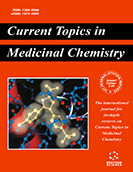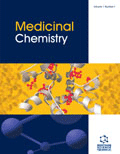Abstract
Using wheat germ acid phosphatase and sodium orthovanadate as a competitive inhibitor, a novel method for analyzing reversible inhibition was carried out. Our alternative approach involves plotting the initial velocity at which product is formed as a function of the ratio of substrate concentration to inhibitor concentration at a constant enzyme concentration and constant assay conditions. The concept of initial concentrations driving equilibrium leads to the chosen axes. Three apparent constants can be derived from this plot: Kmax, Kmin, and Kinflect. Kmax and Kmin represent the substrate to inhibitor concentration ratio for complete inhibition and minimal inhibition, respectively. Kinflect represents the substrate to inhibitor concentration ratio at which the enzyme-substrate complex is equal to the inhibitory complex. These constants can be interpolated from the graph or calculated using the first and second derivative of the plot. We conclude that a steeper slope and a shift of the line to the right (increased x-axis values) would indicate a better inhibitor. Since initial velocity is not a linear function of the substrate/inhibitor ratio, this means that inhibition changes more quickly with the change in the [S]/ [I] ratio. When preincubating the enzyme with substrate before the addition of inhibitor, preincubating the enzyme with inhibitor before the addition of substrate or with concurrent addition of both substrate and inhibitor, modest changes in the slopes and y-intercepts were obtained. This plot appears useful for known competitive and non-competitive inhibitors and may have general applicability.
Keywords: Acid phosphatase, enzyme kinetics, inhibition mathematical model.
Graphical Abstract
Current Enzyme Inhibition
Title:An Additional Method for Analyzing the Reversible Inhibition of an Enzyme Using Acid Phosphatase as a Model
Volume: 11 Issue: 2
Author(s): Jordan M. Baumhardt, Benjamin M. Dorsey, Craig C. McLauchlan and Marjorie A. Jones
Affiliation:
Keywords: Acid phosphatase, enzyme kinetics, inhibition mathematical model.
Abstract: Using wheat germ acid phosphatase and sodium orthovanadate as a competitive inhibitor, a novel method for analyzing reversible inhibition was carried out. Our alternative approach involves plotting the initial velocity at which product is formed as a function of the ratio of substrate concentration to inhibitor concentration at a constant enzyme concentration and constant assay conditions. The concept of initial concentrations driving equilibrium leads to the chosen axes. Three apparent constants can be derived from this plot: Kmax, Kmin, and Kinflect. Kmax and Kmin represent the substrate to inhibitor concentration ratio for complete inhibition and minimal inhibition, respectively. Kinflect represents the substrate to inhibitor concentration ratio at which the enzyme-substrate complex is equal to the inhibitory complex. These constants can be interpolated from the graph or calculated using the first and second derivative of the plot. We conclude that a steeper slope and a shift of the line to the right (increased x-axis values) would indicate a better inhibitor. Since initial velocity is not a linear function of the substrate/inhibitor ratio, this means that inhibition changes more quickly with the change in the [S]/ [I] ratio. When preincubating the enzyme with substrate before the addition of inhibitor, preincubating the enzyme with inhibitor before the addition of substrate or with concurrent addition of both substrate and inhibitor, modest changes in the slopes and y-intercepts were obtained. This plot appears useful for known competitive and non-competitive inhibitors and may have general applicability.
Export Options
About this article
Cite this article as:
Baumhardt M. Jordan, Dorsey M. Benjamin, McLauchlan C. Craig and Jones A. Marjorie, An Additional Method for Analyzing the Reversible Inhibition of an Enzyme Using Acid Phosphatase as a Model, Current Enzyme Inhibition 2015; 11 (2) . https://dx.doi.org/10.2174/1573408011666150605223952
| DOI https://dx.doi.org/10.2174/1573408011666150605223952 |
Print ISSN 1573-4080 |
| Publisher Name Bentham Science Publisher |
Online ISSN 1875-6662 |
 36
36 1
1 1
1
- Author Guidelines
- Bentham Author Support Services (BASS)
- Graphical Abstracts
- Fabricating and Stating False Information
- Research Misconduct
- Post Publication Discussions and Corrections
- Publishing Ethics and Rectitude
- Increase Visibility of Your Article
- Archiving Policies
- Peer Review Workflow
- Order Your Article Before Print
- Promote Your Article
- Manuscript Transfer Facility
- Editorial Policies
- Allegations from Whistleblowers
- Announcements

















.jpeg)








